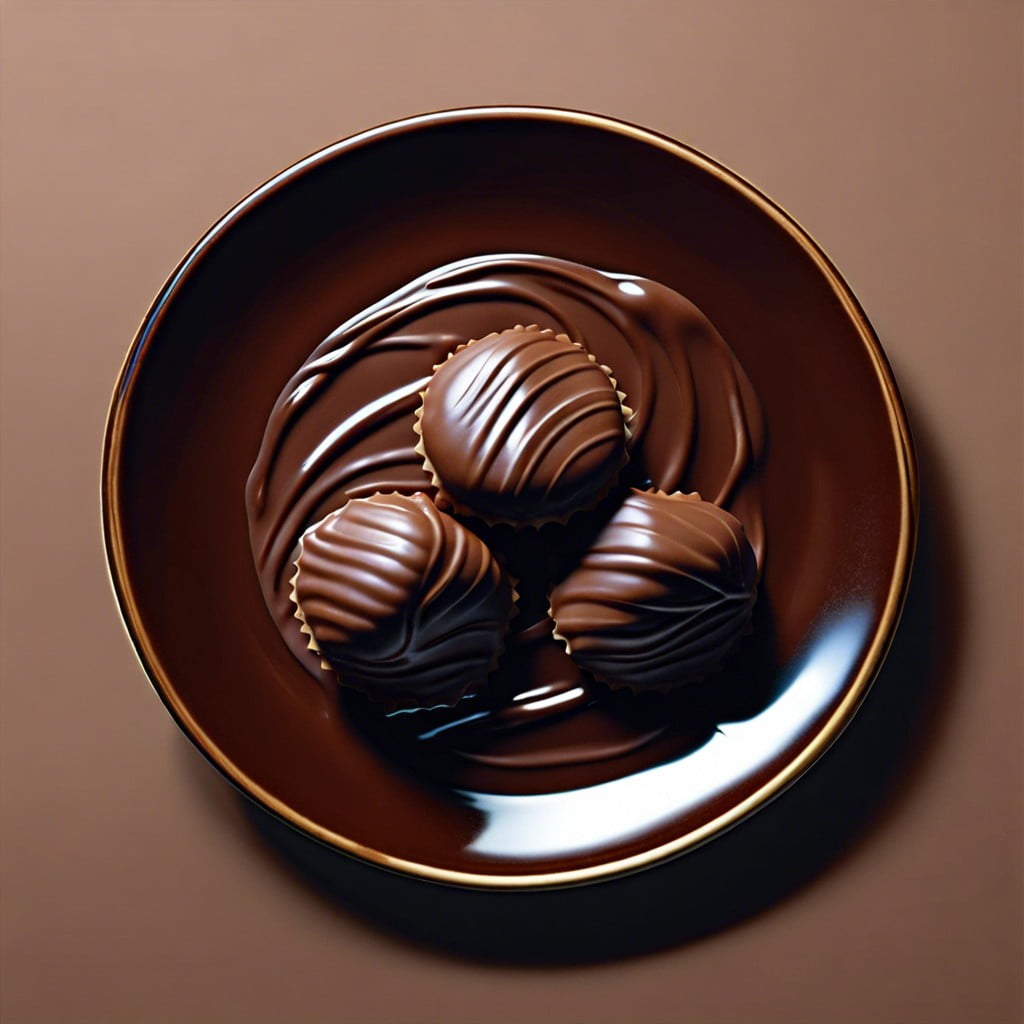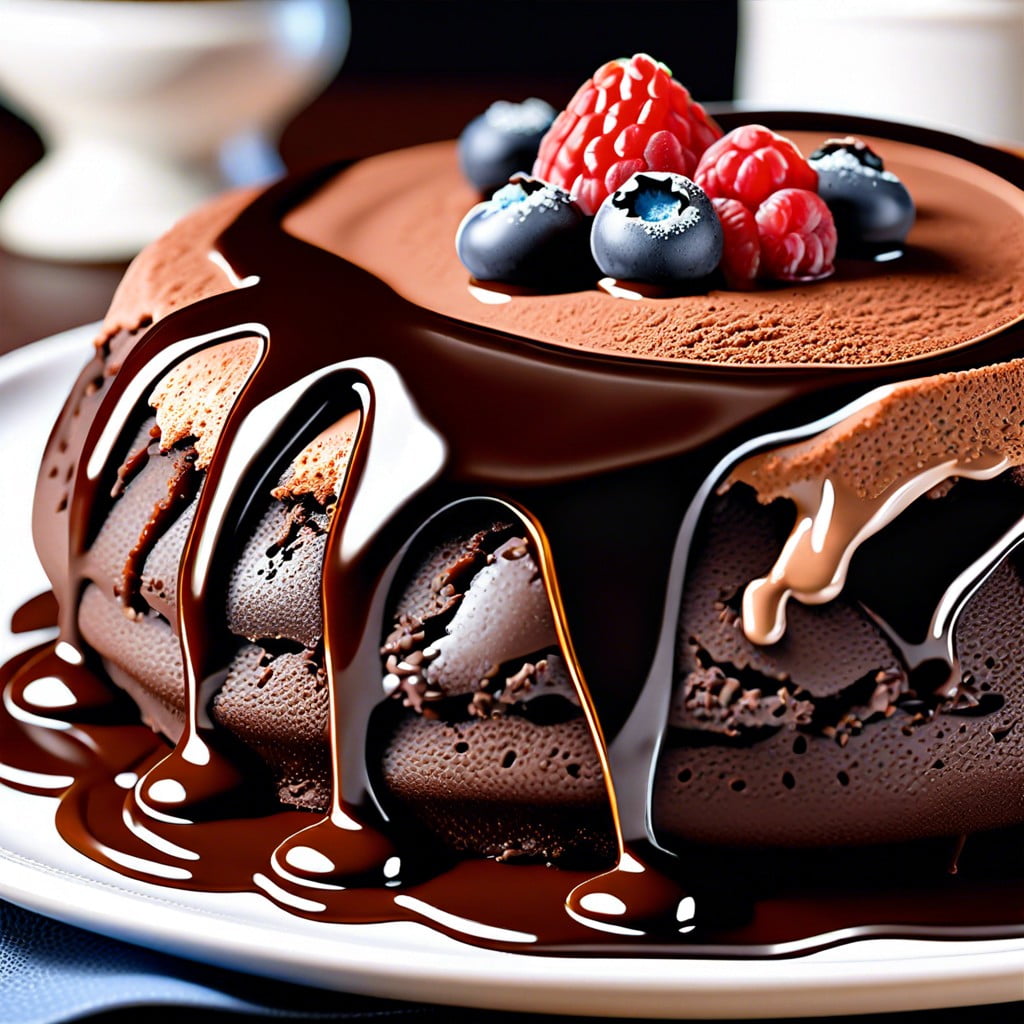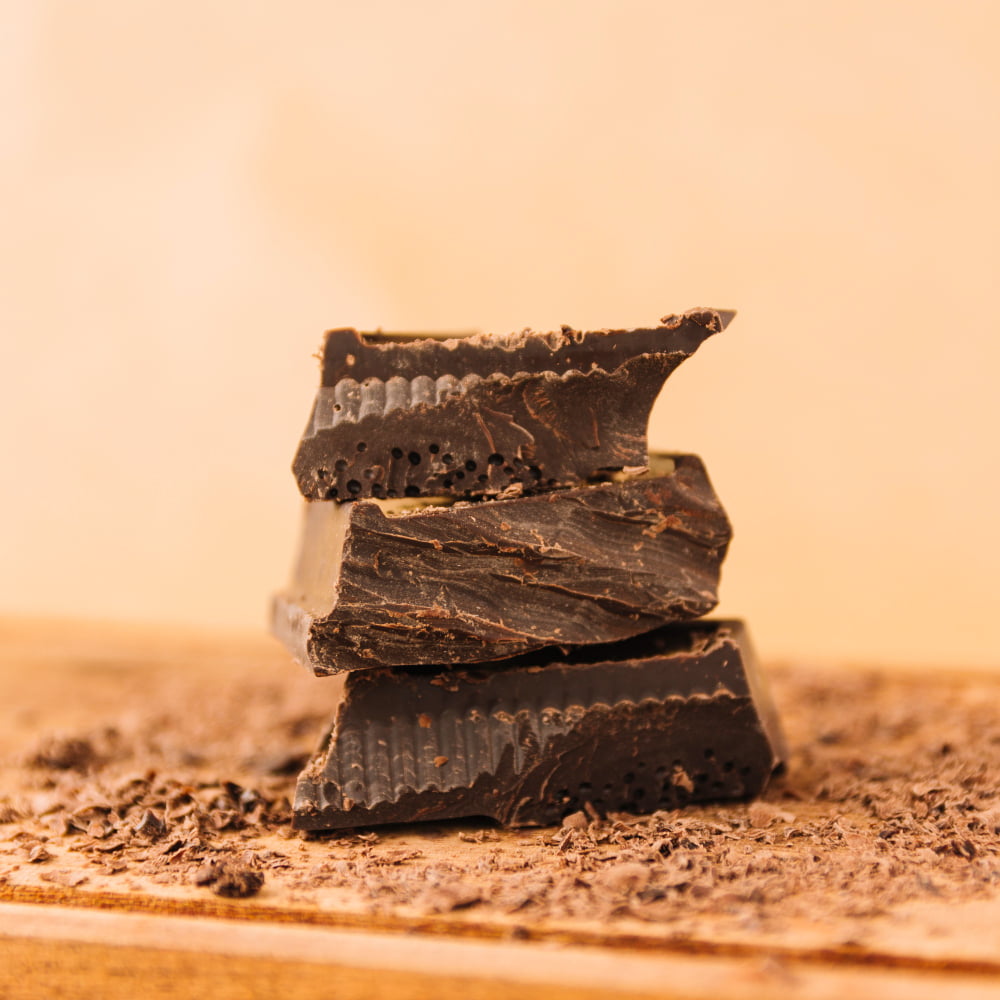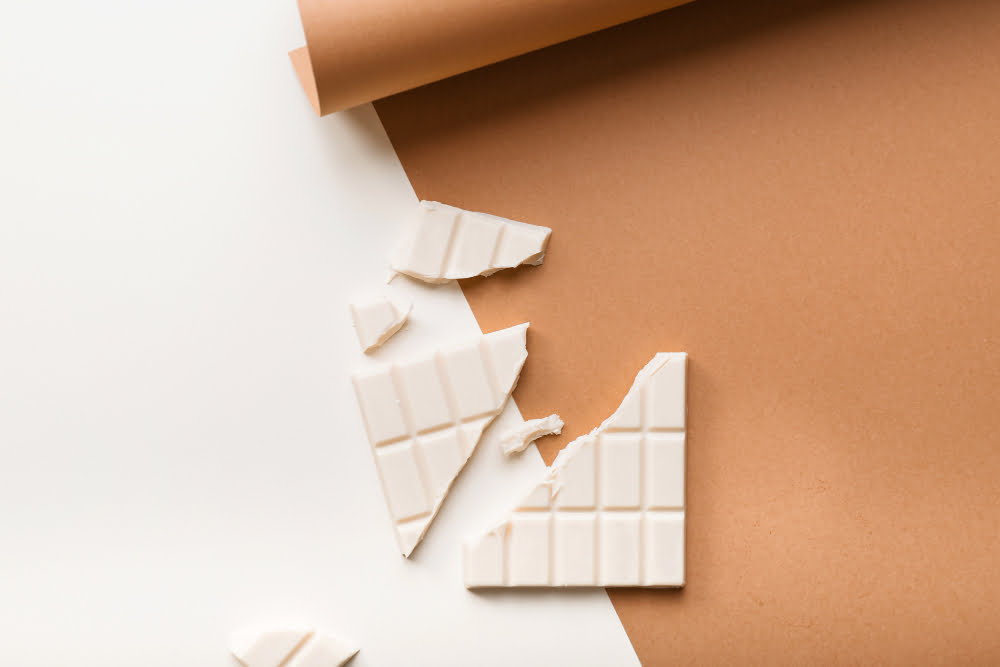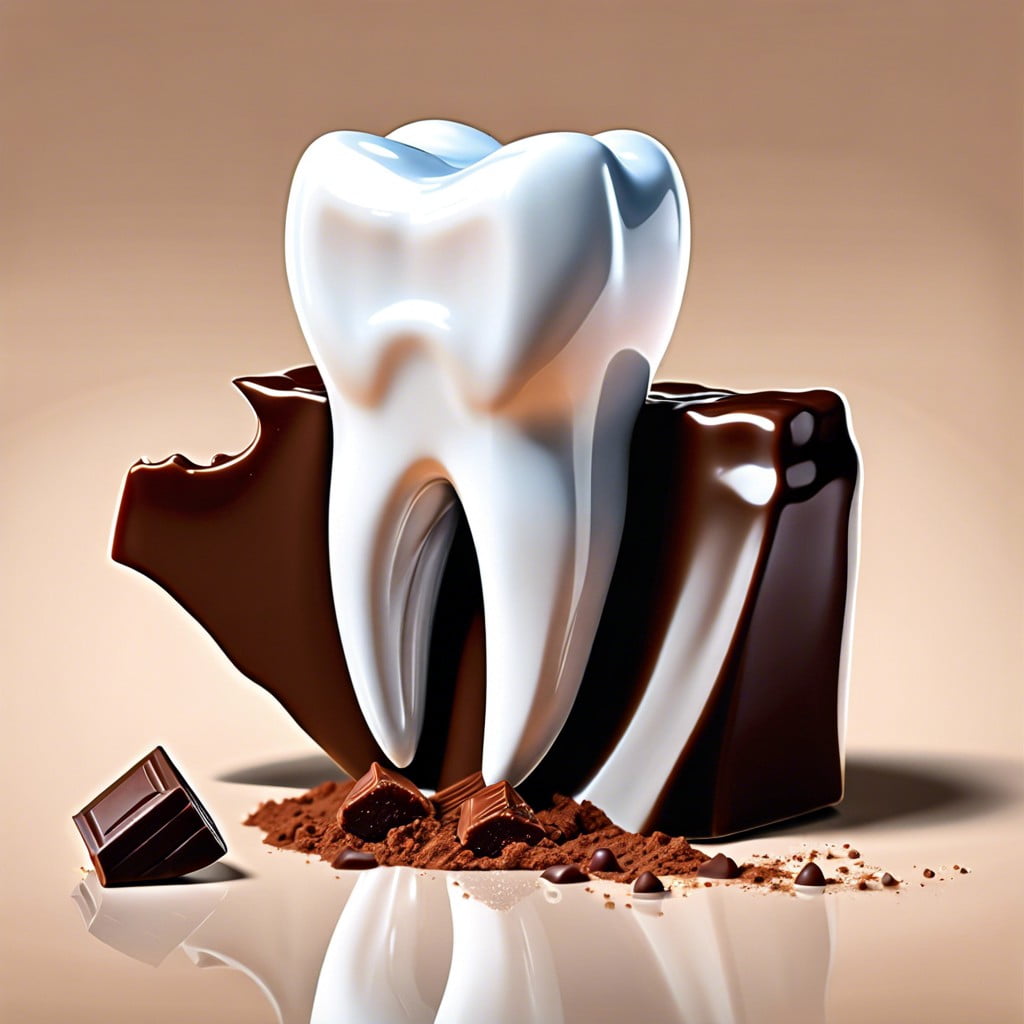Discover the truth behind white chocolate and whether it qualifies as genuine chocolate in this informative article.
Key takeaways:
- White chocolate contains cocoa butter, sugar, milk solids, and vanilla.
- True chocolate has cocoa solids, which white chocolate lacks.
- FDA regulations require white chocolate to have at least 20% cocoa butter.
- White chocolate is creamier and sweeter than dark chocolate.
- White chocolate is made through blending, refining, and conching processes.
Inside
White Chocolate Ingredients
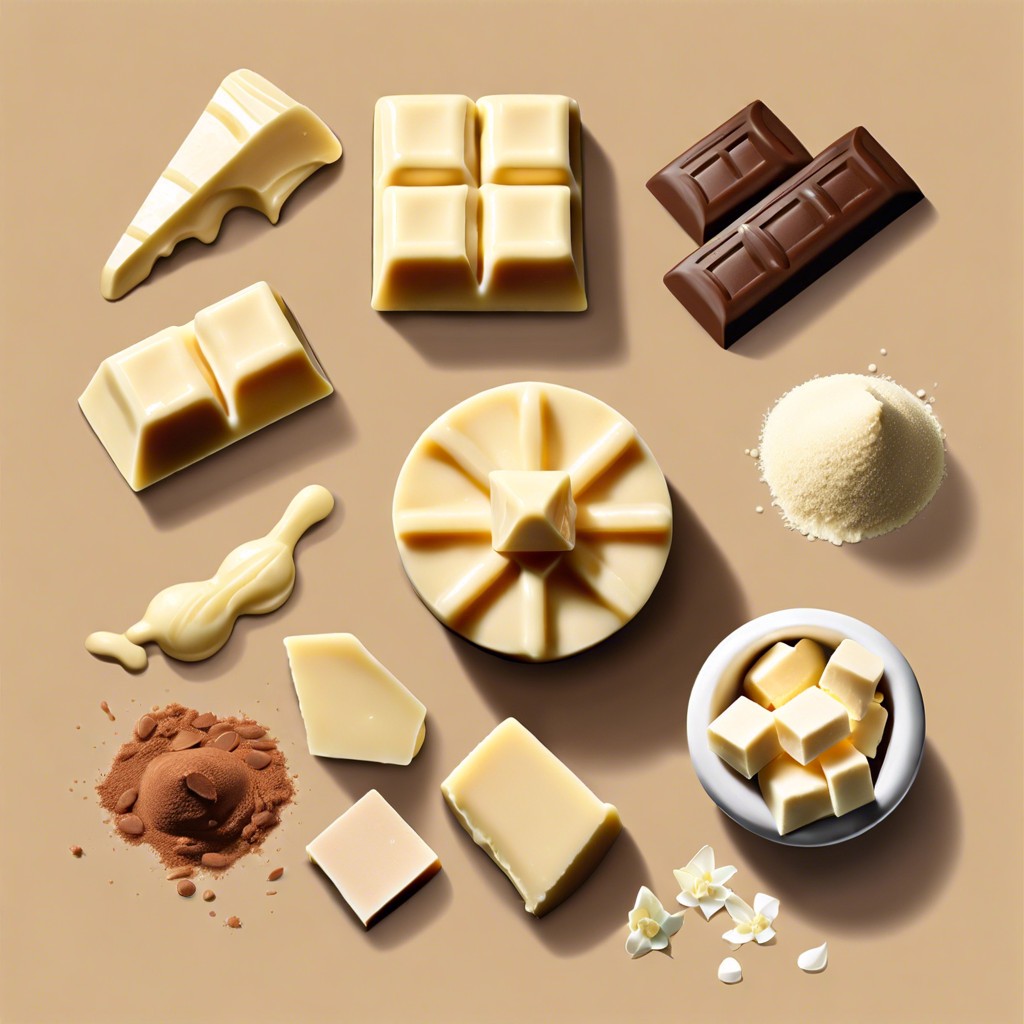
Sure, let’s dive straight into the heart of the matter. The key components of white chocolate include cocoa butter, sugar, milk solids, and often a dash of vanilla for flavor. Unlike its darker counterparts milk and dark chocolate, white chocolate lacks cocoa solids—the ingredient responsible for the characteristic chocolatey taste and color.
Cocoa butter, the fat extracted from the cocoa bean, serves as the base. It imparts a creamy, melt-in-your-mouth texture that’s hard to resist. The sugar sweetens the deal, while milk solids add richness and a velvety smooth finish.
Vanilla rounds out the flavor profile. In the absence of the robust taste provided by cocoa solids, vanilla’s subtle floral notes provide a gentle complement to the sweetness.
Federal guidelines stipulate that genuine white chocolate must contain at least 20% cocoa butter. This standard distinguishes it from imitations that use vegetable fats and flavors. So, if you’re craving the real deal, keep an eye on the label.
Now, some may quibble over whether the lack of cocoa solids strips white chocolate of its right to the title ‘chocolate’. But rest assured, with its generous helping of cocoa butter, it earns its place in the chocolate family fair and square.
Definition of True Chocolate
True chocolate has cocoa solids at its heart—those ground-up pieces of the cacao bean that give chocolate its characteristic flavor and color. These cocoa solids, combined with cocoa butter and sugar, create the chocolate we typically know and love as dark or milk varieties. It’s the presence of these solids that give chocolate its rich taste and the antioxidants it’s famed for. Furthermore, a critical aspect of true chocolate is the transformation it undergoes during the conching process, where flavors develop through the fine grinding of cocoa solids and the intricate blending with other ingredients. The absence of cocoa solids in white chocolate is what sets it apart and raises the question about its chocolate identity.
FDA Regulations On White Chocolate
The Food and Drug Administration (FDA) has crystal clear guidelines for what constitutes white chocolate. To don the moniker of white chocolate, a product must have at least 20% cocoa butter, 14% milk solids, and 3.5% milkfat. Sugar and lecithin can also join the party, along with vanilla for an extra flavor kick. Producers often add these extras to create a creamy, melt-in-your-mouth experience.
Disguised as white chocolate, some products might try to cut corners, using vegetable oils instead of the required cocoa butter. Savvy consumers should eye those ingredient lists; anything lacking cocoa butter doesn’t make the FDA’s cut for white chocolate.
When you’re searching for premium white chocolate, remember these numbers. They’re your ticket to ensuring what you’re about to savor not only meets expectations but follows the rules too.
White Chocolate Versus Dark Chocolate
Diving deeper, we find white chocolate contains cocoa butter, sugar, and milk solids but lacks cocoa solids—the key ingredient in dark and milk chocolates that gives them their rich, chocolatey flavor. Essentially, dark chocolate is packed with these cocoa solids, contributing to a more intense taste and higher levels of antioxidants known as flavonoids.
Texture also plays a part; white chocolate usually offers a creamier mouthfeel, contrasting with dark chocolate’s possible bitter edge and firm snap. The difference is also visual: the absence of cocoa solids gives white chocolate its signature pallor, while dark chocolate flaunts a deep, almost ebony hue.
When it comes to sweetness, white chocolate takes the cake, often being sweeter than its darker counterpart which has less sugar and a higher cocoa content. This distinction is essential for bakers and confectionery artists, as the two can’t always be swapped one-for-one in recipes.
Another point of difference lies in the melting point. White chocolate melts at a slightly lower temperature due to its high cocoa butter content, requiring a gentler touch when melting to incorporate into dishes or for tempering.
Nutritionally, both offer a caloric punch, but dark chocolate usually comes out ahead in the health department with its antioxidants and lower sugar content. However, white chocolate’s rich calcium level from the milk solids shouldn’t be overlooked.
Understanding these contrasts is vital for anyone keen to elevate their chocolate-based culinary adventures. Choose wisely based on flavor profile, desired texture, and the role chocolate plays in your creation. Whether you lean towards the creamy indulgence of white or the boldness of dark, each has a place in the pantheon of treats.
How White Chocolate Is Made: A Step-By-Step Guide
Cocoa butter, that smooth operator, plays the lead role in white chocolate’s creation. Unlike its darker relatives, white chocolate skips the cocoa solids, opting for this golden goodness instead.
Step into the kitchen where the chocolate alchemy begins, and you’ll find sugar, milk products, and vanilla keeping cocoa butter company. These ingredients don’t just hop in a bowl and call it a day; they undergo a process of blending and refining.
The mixture takes a spin on the conching dance floor, whirling and twirling for hours. Conching, a crucial step, ensures a velvety texture that’ll make taste buds swoon.
Next, it’s tempering time, where precision guides the chocolate to cool under specific conditions. This critical shuffle of temperatures gives the chocolate its snap and shine.
Lastly, the concoction is poured into molds. As they cool, they solidify into the creamy bars that wink at you from the shelves. With these steps, a confection that often stirs debate is born, inviting discussions on its place in the chocolate pantheon.
